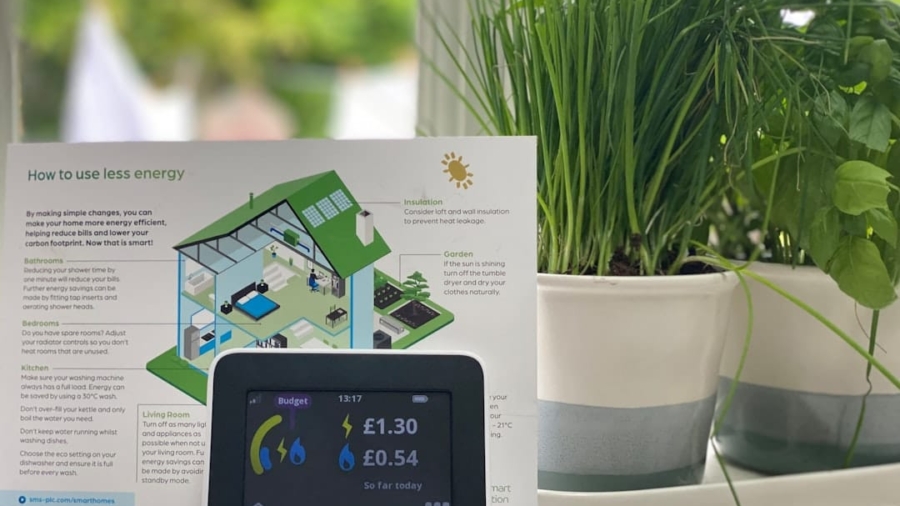The evolution of energy systems has reached a pivotal moment with the advent of smart grids, which represent a significant leap forward in the way electricity is generated, distributed, and consumed. Unlike traditional power grids, which rely on a one-way flow of electricity from producers to consumers, smart grids utilize advanced digital technology to create a two-way communication system. This transformation allows for real-time monitoring and management of energy resources, enhancing the efficiency and reliability of electricity supply.
Smart grids integrate various technologies, including sensors, smart meters, and automated control systems, to optimize energy distribution and consumption.
By leveraging data analytics and Internet of Things (IoT) technologies, smart grids can respond dynamically to changes in energy demand and supply.
This adaptability is crucial in an era where energy consumption patterns are rapidly evolving due to factors such as urbanization, climate change, and the increasing penetration of renewable energy sources. As cities grow and energy needs become more complex, the implementation of smart grids emerges as a vital solution for enhancing urban energy efficiency.
Key Takeaways
- Smart grids are modern electricity networks that use digital technology to optimize the production, distribution, and consumption of electricity.
- Smart grids can improve urban energy efficiency by reducing energy waste, integrating renewable energy sources, and enabling demand response programs.
- Integration of renewable energy sources in smart grids can help reduce carbon emissions and reliance on fossil fuels, leading to a more sustainable and environmentally friendly energy system.
- Advanced Metering Infrastructure (AMI) in smart grids allows for real-time monitoring of energy usage, enabling better management of electricity distribution and consumption.
- Demand response programs in smart grids allow consumers to adjust their electricity usage in response to price signals or grid conditions, helping to balance supply and demand and reduce peak load.
Benefits of Smart Grids for Urban Energy Efficiency
One of the most significant advantages of smart grids is their ability to enhance urban energy efficiency through improved demand-side management. By providing consumers with real-time data on their energy usage, smart grids empower individuals and businesses to make informed decisions about their consumption patterns. For instance, smart meters can display energy usage in real-time, allowing users to identify peak consumption times and adjust their habits accordingly.
This level of transparency encourages energy conservation and can lead to substantial reductions in overall energy demand. Moreover, smart grids facilitate the integration of energy-efficient technologies within urban environments. For example, cities can implement smart lighting systems that adjust brightness based on ambient light levels or occupancy sensors.
These systems not only reduce energy consumption but also enhance public safety and comfort. Additionally, smart grids enable the deployment of distributed energy resources (DERs), such as solar panels and battery storage systems, which can be managed more effectively through advanced grid technologies. By optimizing the use of these resources, urban areas can significantly lower their carbon footprint while ensuring a reliable energy supply.
Integration of Renewable Energy Sources in Smart Grids
The integration of renewable energy sources into smart grids is a transformative aspect that aligns with global sustainability goals. Traditional power grids often struggle to accommodate the intermittent nature of renewable energy generation, such as solar and wind power. However, smart grids are designed to handle these fluctuations by utilizing advanced forecasting tools and real-time data analytics.
For instance, predictive algorithms can analyze weather patterns to anticipate solar or wind generation levels, allowing grid operators to adjust supply accordingly. Furthermore, smart grids facilitate the decentralized generation of electricity through microgrids, which can operate independently or in conjunction with the main grid. These microgrids can harness local renewable resources, such as rooftop solar panels or community wind farms, thereby reducing transmission losses and enhancing energy security.
In urban settings, where space is often limited, innovative solutions like vertical solar farms or building-integrated photovoltaics (BIPV) can be employed to maximize renewable energy generation. The ability to seamlessly integrate these diverse energy sources not only enhances grid resilience but also promotes a cleaner energy landscape.
Role of Advanced Metering Infrastructure in Smart Grids
Advanced Metering Infrastructure (AMI) is a cornerstone of smart grid technology that plays a crucial role in enhancing urban energy efficiency. AMI encompasses smart meters, communication networks, and data management systems that enable utilities to collect and analyze consumption data in real-time. This infrastructure allows for more accurate billing and reduces the need for estimated readings, which can lead to customer dissatisfaction and revenue losses for utilities.
Moreover, AMI facilitates dynamic pricing models that encourage consumers to shift their energy usage to off-peak times when demand is lower. For example, time-of-use pricing can incentivize users to run high-energy appliances during the night rather than during peak hours. This not only helps balance the load on the grid but also allows consumers to save on their electricity bills.
Additionally, AMI supports enhanced outage management capabilities by providing utilities with immediate information about service interruptions, enabling quicker response times and minimizing downtime for customers.
Demand Response and Smart Grids
Demand response (DR) is an essential component of smart grids that enables consumers to adjust their electricity usage in response to supply conditions or price signals. By actively participating in demand response programs, consumers can help stabilize the grid during peak demand periods or when there are disruptions in supply. Smart grids facilitate this process by utilizing real-time data and automated systems that communicate with connected devices in homes and businesses.
For instance, during periods of high demand, utilities can send signals to smart appliances—such as thermostats or water heaters—to temporarily reduce their energy consumption. This not only alleviates stress on the grid but also provides financial incentives for consumers who participate in these programs. The integration of demand response into smart grids enhances overall system efficiency by reducing the need for costly peaking power plants and minimizing greenhouse gas emissions associated with fossil fuel generation.
Smart Grids and Electric Vehicles
The rise of electric vehicles (EVs) presents both opportunities and challenges for urban energy systems, making the role of smart grids increasingly vital. As more consumers transition to electric vehicles, the demand for charging infrastructure will grow significantly. Smart grids can effectively manage this increased demand by optimizing charging schedules based on grid conditions and electricity prices.
For example, during periods of low demand or high renewable generation, EV owners can be incentivized to charge their vehicles at lower rates. Additionally, smart grids enable vehicle-to-grid (V2G) technology, which allows EVs to not only draw power from the grid but also return excess energy back to it when needed. This bi-directional flow of electricity can help stabilize the grid during peak periods or emergencies while providing EV owners with additional revenue streams through participation in demand response programs.
The integration of EVs into smart grids thus creates a synergistic relationship that enhances both transportation sustainability and grid resilience.
Challenges and Future of Smart Grids in Urban Energy Efficiency
Despite the numerous benefits associated with smart grids, several challenges must be addressed to fully realize their potential in enhancing urban energy efficiency. One significant hurdle is the need for substantial investment in infrastructure upgrades and technology deployment. Many existing power systems are outdated and require significant capital to modernize.
Additionally, regulatory frameworks must evolve to support innovative business models that promote investment in smart grid technologies. Cybersecurity is another critical concern as smart grids become increasingly interconnected and reliant on digital communication systems. The potential for cyberattacks poses risks not only to individual utilities but also to national security if critical infrastructure is compromised.
Ensuring robust cybersecurity measures will be essential as cities adopt more advanced technologies within their energy systems. Looking ahead, the future of smart grids will likely involve greater integration with emerging technologies such as artificial intelligence (AI) and blockchain. AI can enhance predictive analytics for load forecasting and maintenance scheduling, while blockchain technology may provide secure platforms for peer-to-peer energy trading among consumers.
As these technologies mature, they will further empower urban areas to optimize their energy efficiency while fostering a more sustainable future.
The Impact of Smart Grids on Urban Energy Efficiency
The impact of smart grids on urban energy efficiency is profound and multifaceted. By facilitating real-time communication between utilities and consumers, enabling the integration of renewable energy sources, and promoting demand response initiatives, smart grids are transforming how cities manage their energy resources. As urban populations continue to grow and environmental concerns become increasingly pressing, the role of smart grids will be pivotal in creating sustainable and resilient urban environments.
The ongoing development of advanced metering infrastructure and electric vehicle integration further underscores the potential for smart grids to revolutionize urban energy systems. While challenges remain in terms of investment and cybersecurity, the future holds promise for innovative solutions that will enhance urban energy efficiency through smarter management practices. As cities embrace these technologies, they will not only improve their energy performance but also contribute significantly to global sustainability efforts.




